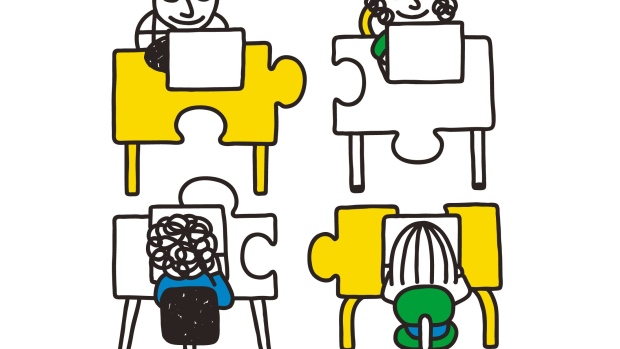Jun 12, 2020
Four ways to preserve company culture as work from home continues
, Bloomberg News

After three months of remote work, companies are embracing the idea that it might become semi-permanent.
Facebook Inc. and Google announced that employees don’t have to return to the office in 2020, while Twitter says staff can do their jobs from home for good.
But what happens to company culture when physical distance remains long after the virus recedes? Industry leaders share their best practices for preserving it:
Coordination, consistency, and continuity are key
For the No. 29, a communications agency built around connection and outreach, the way forward involves doubling down on coordination. “For our day-to-day, this has become crucial.
Everyone sends through their priorities by 10 a.m., and we discuss by video to ensure that we’re meeting goals and client needs,” says co-founder Melody Serafino. At close of business, the team sends another update. “We thrive on physical contact in our work. In its absence, this structure allows us to ensure we stay on target and can identify additional support where needed,” says co-founder Erin Alweiss.
Consistency and continuity were the other pieces of the puzzle in this adjustment period. Serafino and Alweiss knew that they needed to remain a resource for their partners as they navigate the uncertainty of the moment.
Drawing on their core values of sustainable consumption and ethical business, the women launched a weekly newsletter after working from home became the new normal, involving their entire team in its creation.
Not only does it advance their mission, it makes their team feel engaged and valued—fundamental to producing consistent and high-quality work.
Adapt, test, and learn
Nida Januskis, associate dean of advancement at INSEAD business school, may not have been able to predict the shuttering of the institution’s global campuses, but she knew its founding value of innovation would help staff and students adapt.
“We’ve always been encouraged to experiment,” she says. “That made us better prepared to test new ideas as well as accelerate and scale our transition to online programming—executive education, virtual coursework for MBA students, and alumni engagement through a new lifelong learning initiative.” And when they falter, they learn and try again.
Similarly, a willingness and ability to test new strategies put the Well, a New York-based private health club, on the right path. “In response to the crisis and the club closure, we accelerated our vision to build a robust digital platform and brought our entire business online,” says Sarrah Hallock, co-founder and chief operating officer.
She and her team of 40 launched proprietary product lines, wellness- and health-focused newsletters, and new digital services for members, from mindful-movement classes and health coaching sessions to lectures and telemedicine. Not only have the concepts suited this moment, they lend themselves to remote collaboration.
Adjust guidance
Januskis has observed new behaviors emerging from INSEAD’s top leadership to address the particularities of the current work environment.
“There are three pillars we now try to keep in mind: Act together—how do we support decisions institution-wide? Focus—how do we prioritize? And how do we best stay connected in the service of our goals?” Whatever that guidance may be for a given company, she says, it should be clearly communicated and support employees at all levels.
Keep your company’s mission front of mind
Longer term, upholding corporate culture and productive output means putting the company’s guiding values at the forefront of every action. “Our mission is to make sure our clients’ businesses are successful, but to do that, we need to first ensure we’re protecting the heart of ours: our people,” says Jem Ripley, chief executive officer of Publicis Communications East.
Part of that has meant making unstructured thinking time—which happens organically in the office—a scheduled priority for the company’s strategists and creatives. “Our teams and our talent allow us to do what we do,” says Ripley. “It’s paramount that we make sure they are safe during this time—and continue to be—and have an environment to do their best work.”






